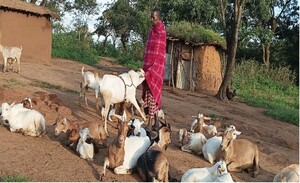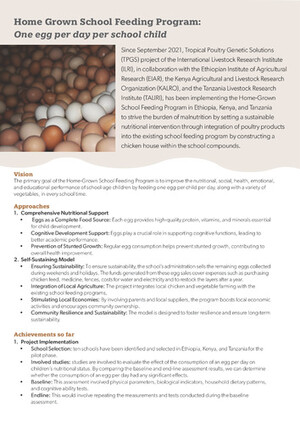
Genotype by environment interactions (G*E) of chickens tested in Ethiopia using body weight as a performance trait
Abstract
Ethiopia is a developing nation that could highly benefit from securing food via improved smallholder poultry farming. To support farmer and breeding decisions regarding which chicken strain to use in which Ethiopian environment, G*E analyses for body weight (BW) of growing male and female chickens were conducted. Research questions were (1) if a G*E is present for BW and (2) which strain performs best in which environment in terms of predicted BW. Analyses were performed using predicted BW at four different ages (90, 120, 150, and 180 days) of five strains (Horro, Koekoek, Kuroiler, Sasso-Rhode Island Red (S-RIR), and Sasso) tested in five Ethiopian regions (Addis Ababa, Amhara, Oromia, South Region, and Tigray) that are part of three Agro-Ecological Zones (AEZ) (cool humid, cool sub-humid, and warm semi-arid). The indigenous Horro strain was used as a control group to compare four other introduced tropically adapted strains. The dataset consisted of 999 female and 989 male farm-average BW measurements. G*E was strongly present (p < 0.001) for all combinations of strain and region analyzed. In line with previous research, Sasso was shown to have the highest predicted BW, especially at an early age, followed by Kuroiler. Horro had the lowest predicted BW at most ages and in most regions, potentially due to its young breeding program. The highest predicted BW were observed in Tigray, Oromia, and Amhara regions, which are in the main part of the cool sub-humid AEZ.
Citation
de Kinderen, M.A.J., Sölkner, J., Mészáros, G., Alemu, S.W., Esatu, W., Bastiaansen, J.W.M., Komen, H. and Dessie, T. 2023. Genotype by environment interactions (G*E) of chickens tested in Ethiopia using body weight as a performance trait. Animals 13:3121.










